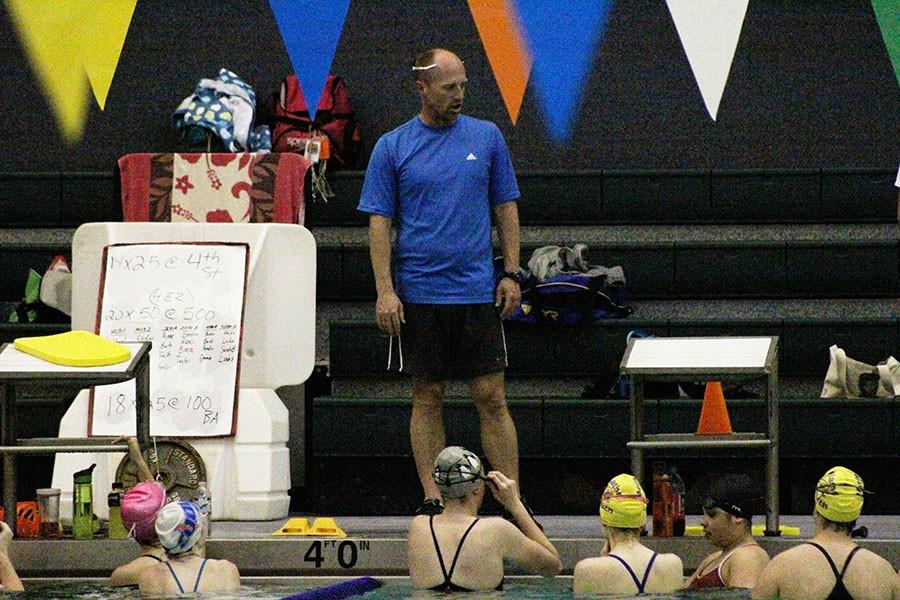Girls swimming tests new training method
Brandon Simpson, head coach, instructs the girls swim team during a USRPT workout. Simpson believes that there are already improvements being made early in the season.
April 14, 2015
Ultra Short Race Pace Training or USRPT has taken the swimming community by storm over the last couple of years.
Brandon Simpson, head boys and girls swimming coach, has had his eye on the method of USRPT and decided to put it into action for this girls swim season.
“The short high school season in comparison to a club season makes USRPT an ideal fit. High school coaches have a short amount of weeks to get swimmers going as fast as possible,” Simpson said.
USRPT is a training program innovated by Dr. Brent Rushall, an Australian scientist. It has most famously been implemented by 15-year-old swimming phenom, Michael Andrew, who works closely with Rushall. The entire program is based on building muscle memory and engraving race pace effort into a swimmer’s mind. It has received flack for not incorporating long yardage workouts like traditional training methods, but the objective is to swim short distances at pace, without taxing the body.
It is far more difficult to successfully train using USRPT with a large group like the girls swim team, rather than one-on-one work like Andrew with his coach, Peter Andrew, due to the specificity for each swimmer. However, Simpson has been able to make it work.
“Every individual has their own goal time in every stroke posted pool side. Every day we swim to meet specific goal times in almost every stroke,” Simpson said.
For example, if a swimmer wants to swim a one-minute 100-yard butterfly, she will perform 20×25 yard swims all at 15 seconds; 15-20 seconds rest will be taken in between each 25. If said swimmer fails to go 15 seconds or faster, she will sit out the next 25.
The goal is to complete all 20 repeats successfully at pace.


John Halgren • Mar 20, 2016 at 7:29 pm
Amen! A coach who continues to learn instead of just doing the same old thing over and over again! This coach is earning his pay!